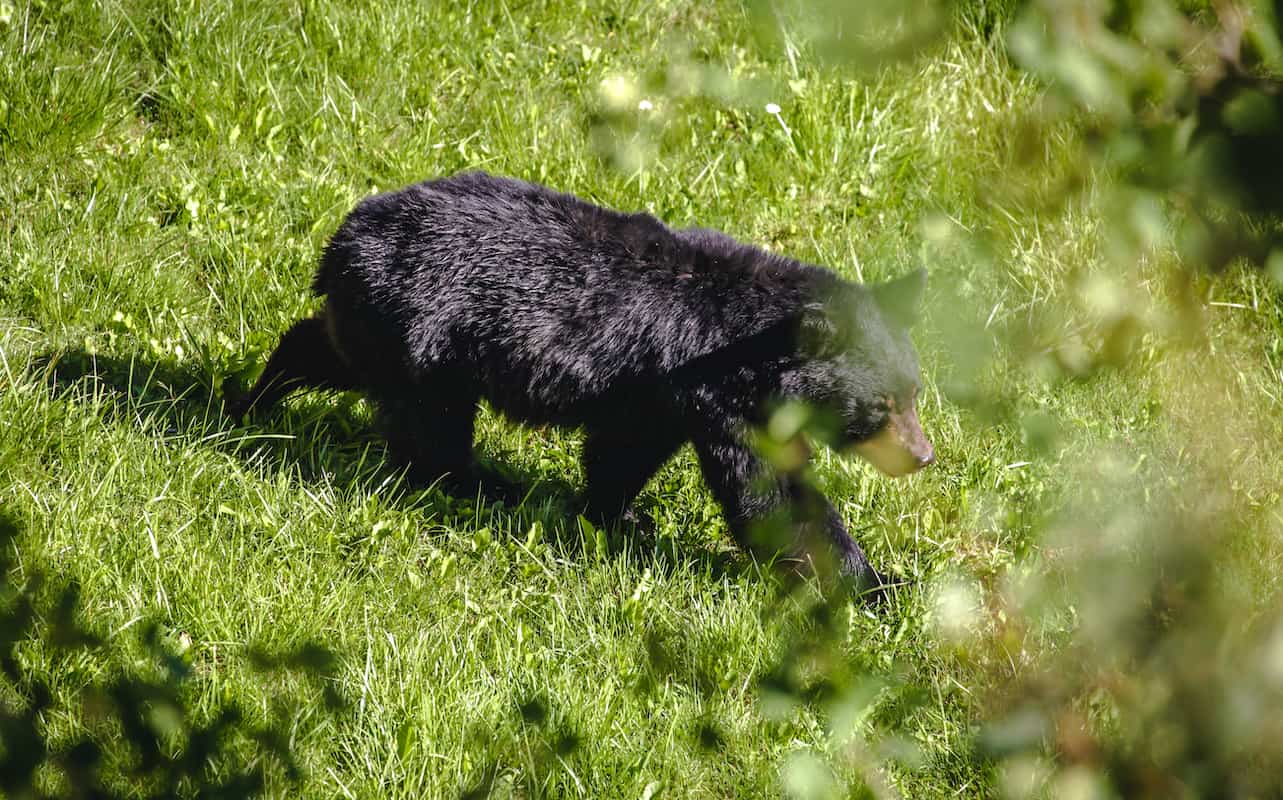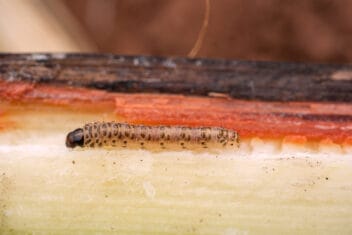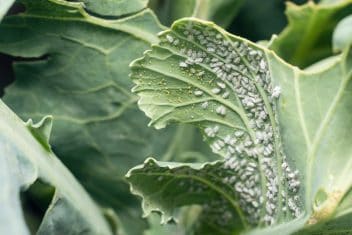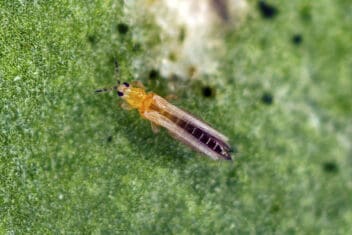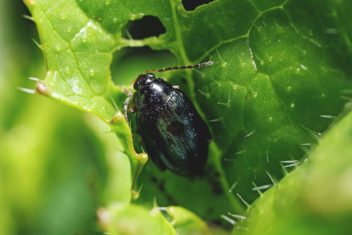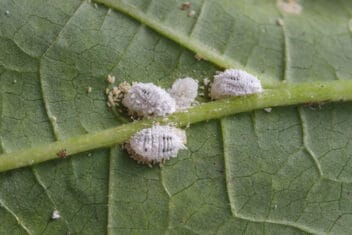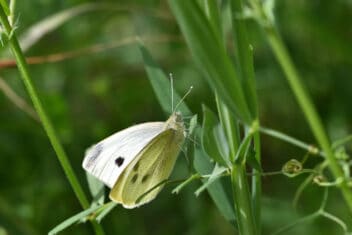Lions, and tigers, and bears – Oh my! We’ve all heard the familiar refrain, but what do bears have to do with your garden?
Black bear populations are gaining numbers in many states and bear-human conflicts are on the rise. As a result, many gardeners need to start considering how to handle the situation.
It’s especially an issue if you’re raising things such as honey and fruit that bears naturally forage for.
So what can you do? Read on and we’ll help you keep the bears at bay.
What Do Bears Eat?
Bears are more frequently visiting gardens in the western U.S. and all of Canada. But they’re an increasing source of conflict in eastern states, as well. Reintroduction and expanding territories have brought them into areas where they had previously been hunted to extinction.
So what do bears eat? What draws them to the garden in the first place? Bears are opportunists. They’ll eat fruits, nuts, seeds, veggies, insects, fish, and mammals.
As we all know, bears have a sweet tooth. Isn’t that what always got Yogi and Booboo into trouble? Bears love fruit are attracted to orchards and berry bushes.
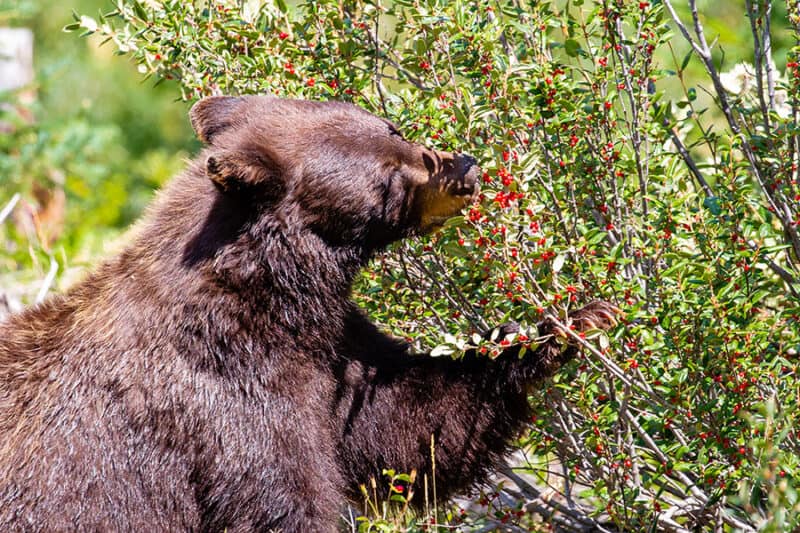
In the wild, native fruits and berries are all an important part of what they eat. The bears don’t understand that your fruits aren’t for them. Plums, crabapples, blackberries, and pawpaws are all part of their natural diet.
Bears also climb trees and go after wild bees for their honey. Unsurprisingly, they’re attracted to beehives.
Are Those Bears Playing Golf?
You may have noticed or heard of bears hanging out on golf courses. This is because bears love clover and dandelions. These greens make a nutritious snack, especially in the spring when bears come out of hibernation.
That’s why you may want to go with more traditional grasses around your home and weed out all the dandelion and clover. Everything you can do to help discourage bears is a good idea.
Should I Worry About My Vegetables?
Vegetables are not a bear’s favorite snack, but given the opportunity, they will dig up and eat root crops. Carrots, beets, and potatoes are the most popular food for bears in the garden.
They’ve also been known to go crazy for a field of corn.
The Chicken Coop
A hungry bear isn’t afraid to go after your chickens, rabbits or other small livestock. They’ve been known to lift up an entire coop or rip apart fencing to get to your poultry.
How to Manage Bears
If you live in bear country you need to protect your beehives, fruit bushes and trees, veggie gardens, and small livestock.
Just like any other issue with wildlife in the garden, it’s up to you to manage the problem. It may be fine if a squirrel is getting into your birdfeeders. However, when a 400-pound black bear decides to eat some seeds it can be a dangerous situation.
In addition, we don’t want to cause bears to see our yards as a food source. Once bears find out that you leave your trash can open, have easy to reach bird feeders, or feed your pets outside, they’re not going to stop coming to your yard.
Once they become dependent on human food, they often end up getting killed, or wildlife management authorities are forced to relocate them.
Build an Electric Fence
The best management tactic to keep bears out of the garden is an electric fence. A regular fence won’t cut it – a determined bear can crawl over or dig under a fence.

Electric fences are not complicated to install and can be permanent or temporary.
A permanent fence is ideal for an area such as an orchard where you won’t be moving the plants around. A temporary fence is good for when you have chickens or goats to protect but you want to be able to move them to fresh pasture.
The electric fence is designed to give a shock to anyone that touches it. That’s important to keep in mind. While you are keeping bears out you will also be teaching your animals to keep their distance and respect the inside barriers of the fence.
The electric shock is uncomfortable, however, it doesn’t do long-lasting harm and isn’t lethal. That said, if an animal gets caught in an electric fence and gets repeated shocks it may die from stress.
Always remember to patrol your electric fence to make sure it’s working effectively and also not harming animals – domestic or wild.
Bears have thick fur which protects the skin from a shock. The goal is to shock their nose and face. Bears are curious and smart. They gather information with their noses. A shock to the nose is a big deterrent!
The Alaska Department of Fish and Game makes the following recommendations.
- Your fence should have 5,000 to 7,000 volts.
- Bears need multiple strands of wire spaced about eight inches apart.
- Make sure you use non-conductive plastic or fiberglass posts.
- Galvanized, smooth steel or aluminum wire is the best when you have a large area to enclose. For smaller gardens or pens you can use stranded stainless steel poly wire and poly tape.
Loud Noises Can Help
You can use loud noises to frighten bears away from your garden. One option is to purchase a hand-held wildlife deterrent horn. Staying a safe distance away, you can point and press the trigger to emit a screaming sound to cause the bear to run off.
Make sure that the bear has an escape route where it can turn around and run. If a bear feels trapped or cornered, they may run in your direction.
The downside is that you must be present to catch the bear in action.
Another good noisemaker is to get a barking dog in a box. Rex Plus Barking Dog Alarm is furious sounding enough to scare off most bears. The Critter Gitter device also works with motion sensors. It makes high pitched sounds and blasts lights in several patterns that change randomly.
There are several disadvantages to loud noises. First and foremost, they may make your life miserable and can anger your neighbors. Furthermore, the automatic ones will be activated by any animal including the family pet or passing deer.
Blast of Water
Things such as the scarecrow animal repeller shoot a surge of water when the sense an animal. These have proven effective in scaring off bears.
These devices just hook up to your garden hose and use a motion sensor device to detect when an intruder is near. They emit a forceful four-second blast of water.
Bear Deterrent Landscaping
Another method to help keep bears on their own side of the fence is to plant non-friendly and non-fruiting bear trees. Place this at entry points where the bears come onto your farm. You can also plant them around the yard and children’s play areas.
Some landscaping trees, bushes, and flowers that are considered not attractive to bears include willows, penstemon, mock orange, lupine, and columbine.
For orchards, protect with fencing and keep a clean orchard. Harvest fruit promptly and pick up fallen fruit so the smell does not attract bears.
According to the Bear Smart website, one of the best things to do is to create a one-hundred-foot buffer between the bears and what you want to protect. These buffer zones will decrease the opportunities for bears to come near gardens and yard areas.
Watch Your Fertilizers
Many organic fertilizers are actually attractants for bears. Blood meal, fish emulsion, and deer repellent all smell delightfully yummy to a bear.
Avoid using them in the garden.
Livestock
Livestock should have a secure barn or housing so they can come in at night. You can use many of the same deterrents that you use with your garden to protect the structure. Strobe lights, electronic sirens, and noise-making pyrotechnic work well to protect livestock areas.
As with all wildlife, you need to keep moving the deterrents so that the bears don’t become immune to them. Bears are smart and will realize when an object stays in the same location.
They will then walk right past it to get to the goods.
Be Careful With Compost
Composting can attract bears to your garden. If you live in bear country you should never place fish, meat, or dairy products in the compost pile.
Adding amendments such as blood or bone meal may attract bears. Use lime on your compost pile to aid in the decomposition process and help to reduce odors. Layer your compost and cover your kitchen waste with high fiber materials such as dry leaves or grass clippings.
They make bear-proof compost bins that you can purchase to protect your compost. You can also use an electric fence around your compost pile.
Keeping Safe
With other wildlife, you are much bigger than them. Yes, a skunk can potentially spray you. However, with bears, they have the upper hand as far as strength and size.
Never try to shoo away a bear or chase one off of your property. Always leave the bear an easy out so that they may escape. The bear wants the apple tree or the beehive, not you.
It’s important to know which bear species you are dealing with since that may change your approach. Grizzlies are endangered and only live in the Greater Yellowstone Ecosystem, in much of Montana, a small part of northwest Washington, and all of Alaska.
Black Bears
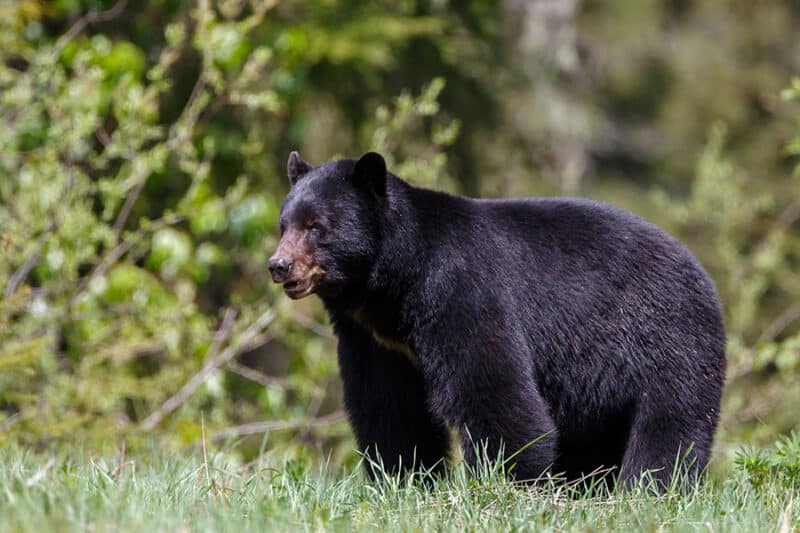
Black bears come in a variety of shades including black, brown, and cinnamon. They have a flatter face with a “Roman-nose” profile, larger rounded ears, smooth shoulder region, and smaller claws.
Grizzly Bears
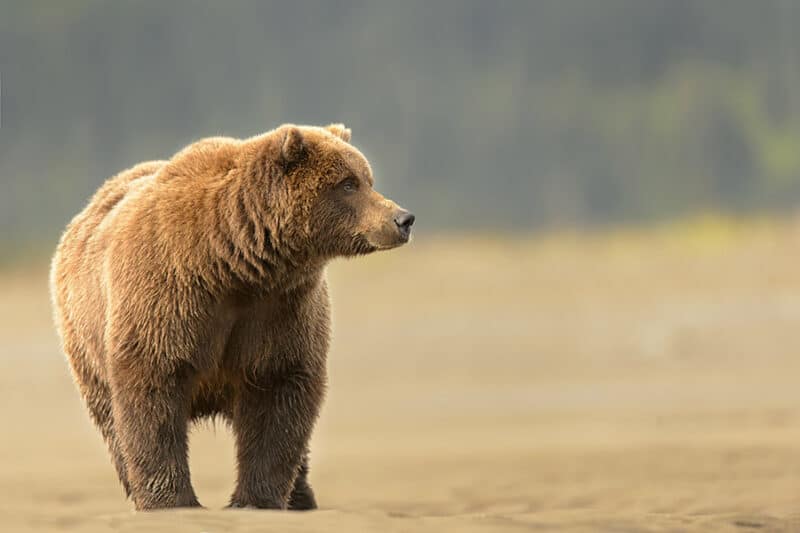
Grizzly bears, also known as brown bears, also come in a variety of colors and are often mistaken for black bears. Colors may range from black to blond. They are typically bigger, but not always.
The grizzly bear has the distinguished shoulder hump, concave face profile, smaller ears, and much longer claws.
If you live in grizzly bear country it’s important to know how to recognize a grizzly versus a black bear. Always retreat when you see a grizzly bear and call a conservation officer.
Living and farming in bear country can be a challenge. Planning and using safe humane deterrents is the key to living with bears. This will help protect your gardens and still allow bears to have their own space.
Remember, the bears were there first and many of our favorite foods are the same ones they have been eating for centuries.
